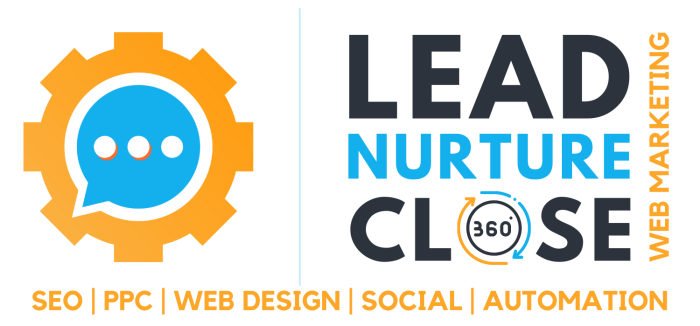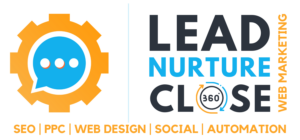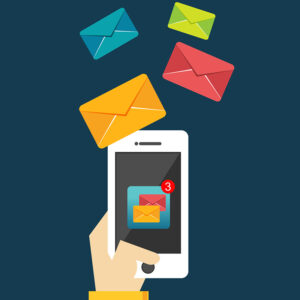For any small business, email marketing is still one of the best ways to build long-term customer relationships and accelerate growth. Unfortunately, many small businesses don’t pay enough attention to email engagement metrics, which ultimately undermines results.
Keeping track of engagement metrics is key to understanding what works for your specific audience. Every business has ever-changing marketing goals but monitoring a few core metrics will help you develop more effective email campaigns going forward.
This guide looks at the importance of tracking engagement data, describes which key metrics you should be paying attention to and how they’re calculated, and offers various tips on how to improve each metric to boost email marketing results.
The Importance of Tracking Email Engagement Metrics
Put simply, email engagement metrics tell you how people interact with your emails. Are your subscribers opening your emails? Are they clicking on the links? Do your emails even reach recipients’ inboxes? If you don’t have an accurate picture of how emails are performing, you may miss crucial opportunities to engage prospects.
Essentially, when you track engagement metrics, you get to know your audience better. You’ll discover what different segments of your audience prefer, uncover the best delivery times, and be in a stronger position to build on what works. You can also avoid wasting time and money on leads that aren’t really interested in your business.
Keeping an eye on the data also enables you to measure your progress over time. You’ll have a set of benchmarks to measure the effectiveness of each email campaign, meaning you can make more informed decisions to optimize results in the future.
Email Engagement: The Top Five Metrics to Track
As a general rule for small businesses using email marketing, here are the five most reliable and useful email engagement metrics to monitor closely:
- Open Rate
The simplest definition of open rate is the percentage of recipients that open an email out of the total number of emails sent. For example, if you send 1,000 emails and 200 subscribers open the email, the open rate would be 20 percent. For a more accurate measurement, you should take away the number of emails that bounce from the total number of emails sent. Bear in mind that the open rate is calculated based on unique opens; it doesn’t count multiple opens from a single subscriber.
Open rates tell you if your subscribers are actually interested in your email content, how effective your subject lines are, and how relevant your content is for different audience segments. According to data published in February 2022, the average email open rate across all industries was 16.97 percent (1).
Tips to improve your email open rates:
- Segment your contact list in order to send more relevant content to each group.
- Write shorter, more compelling subject lines. About 41 characters or seven words is ideal (2).
- Test different send times. Experiment with different days of the week and times of the day.
- Direct subscribers to an email preference center page, where they can choose which types of email they want, and their preferred email frequency.
- Ensure your offers are compelling and competitive.
- Bounce Rate
The bounce rate refers to the percentage of emails sent that fail to reach recipients. It’s calculated by dividing the number of bounced emails by the number of emails delivered and multiplying it by 100. There are two types of bounces:
- Soft bounce. This refers to an email that couldn’t be delivered due to potentially temporary issues. For example, the email was too large, the recipient’s inbox was full, or the recipient’s email server was down or offline.
- Hard bounce. This refers to an email that couldn’t be delivered due to potentially permanent issues. For example, the email address no longer exists, or the email address contains a typo.
A bounce rate of two percent or lower is generally accepted as a good value. By reducing your bounce rates, more of your emails will go where they need to.
Tips to reduce your email bounce rates:
- Remove all of the email addresses that hard bounce from your list.
- Get subscribers to double opt into your list. This is when you ask users to confirm their subscription after they opt in.
- Let subscribers choose the types of email they receive.
- Avoid sending emails that look like spam.
- Verify your email address through your email provider.
- Ask inactive subscribers if they still want to receive your emails.
- Don’t send emails from a free platform such as Gmail or Yahoo.
- Regularly and consistently send emails to your subscribers.
- Click-Through Rate
The click-through rate measures the percentage of people who clicked a link within an email. Basically, it’s calculated by dividing the number of clicks on a link in an email by the number of emails delivered and multiplying it by 100. For example, if the total number of clicks is 80 for 1000 emails delivered, then the click-through rate would be eight percent.
The click-through rate reveals whether or not subscribers are interested in your content and offers. It’s also closely linked to conversion rate, which makes this metric an important one to watch.
According to recent research, the average email click-through rate across all industries is 2.69 percent (3). If your email click-through rate is at least this high, you’re on the right track.
Tips to improve your click-through rates:
- Try using just one call to action per email.
- Improve your call-to-action buttons with more compelling copy and better design.
- Offer strong incentives to capture the attention of subscribers.
- Make sure your subject lines accurately reflect the email content.
- Send relevant content to the right people at the right time.
- A/B test your emails.
- Spam Rate
The spam rate, or spam report rate, is the percentage of delivered emails that are reported as spam by the recipient. It’s calculated by dividing the number of users who marked your email as spam by the total number of emails delivered and multiplying it by 100. For instance, if you send 1,000 emails and three people mark it as spam, the spam rate would be 0.3 percent.
An acceptable spam report rate is around 0.1 percent. A high spam rate can damage your sender’s reputation and reduce deliverability rates, so if your spam rate is higher than 0.1 percent, you should look at the way you’re collecting data and the content you’re sending. High spam rates can indicate a number of potential issues:
- Your leads don’t find value in your email content.
- Subscribers are no longer interested in your brand.
- Your subject lines are misleading.
- You’re using spam trigger words in subject lines.
Tips to improve your spam report rates:
- Don’t send promotional emails without getting permission first, even if a recipient is already your customer.
- Use double opt-ins from the outset.
- Avoid spam trigger words.
- Include your physical address in emails.
- Include a clear unsubscribe link.
- Don’t send too many emails.
- Ask subscribers to whitelist your emails. This means simply asking people to tell their email service providers that you’re not spam.
- Conversion Rate
The conversion rate refers to the percentage of people who click on a link in an email and then take a specific action, such as using a discount code on your website, writing a review, or downloading an eBook. It’s calculated by dividing the number of recipients that complete a desired action by the number of emails delivered and multiplying it by 100. For example, if you send 1,000 emails encouraging recipients to make a purchase on your sales page and 40 recipients complete a purchase, the conversion rate would be four percent.
Conversion goals differ depending on the type of business you run and your specific marketing goals but tracking conversion rates will help you set benchmarks for improvement.
In general, a “good” conversion rate is somewhere between two and five percent, but it depends on your industry and the type of email you send. For example, abandoned cart emails typically achieve higher conversion rates. The best course of action is to use your current conversion rates as a benchmark and continually aim to make them higher.
Tips to improve your email conversion rates:
- Use more dynamic language in call-to-action links.
- Explain the benefits of taking action in the copy around a call to action.
- Include customer testimonials and reviews.
- Test different offers on different segments of your list.
- Use one clear call to action per email.
- Keep it brief. Use short sentences and paragraphs to make emails easier to scan.
Wrapping Up
Regardless of your business’s size and industry, email marketing continues to be one of the best ways to contact and engage your target audience. By tracking the engagement metrics outlined in this guide, you can gain valuable insights into what your audience is interested in, allowing you to make any necessary changes to boost engagement.
Comparing your data with the benchmarks and industry averages referenced here is a great place to start, but it only tells a part of the story. What qualifies as success will vary depending on your business’s unique goals, the types of emails you send, and various factors including email send times. However, by testing different types of emails, looking at your own data, and measuring email performance over time, you can find ways to improve your metrics and ultimately achieve more of your business goals.
Sources:
- smartinsights.com/email-marketing/email-communications-strategy/statistics-sources-for-email-marketing/
- blog.marketo.com/2018/02/email-subject-line-length-works-best.html
- financesonline.com/good-email-click-through-rate/

















